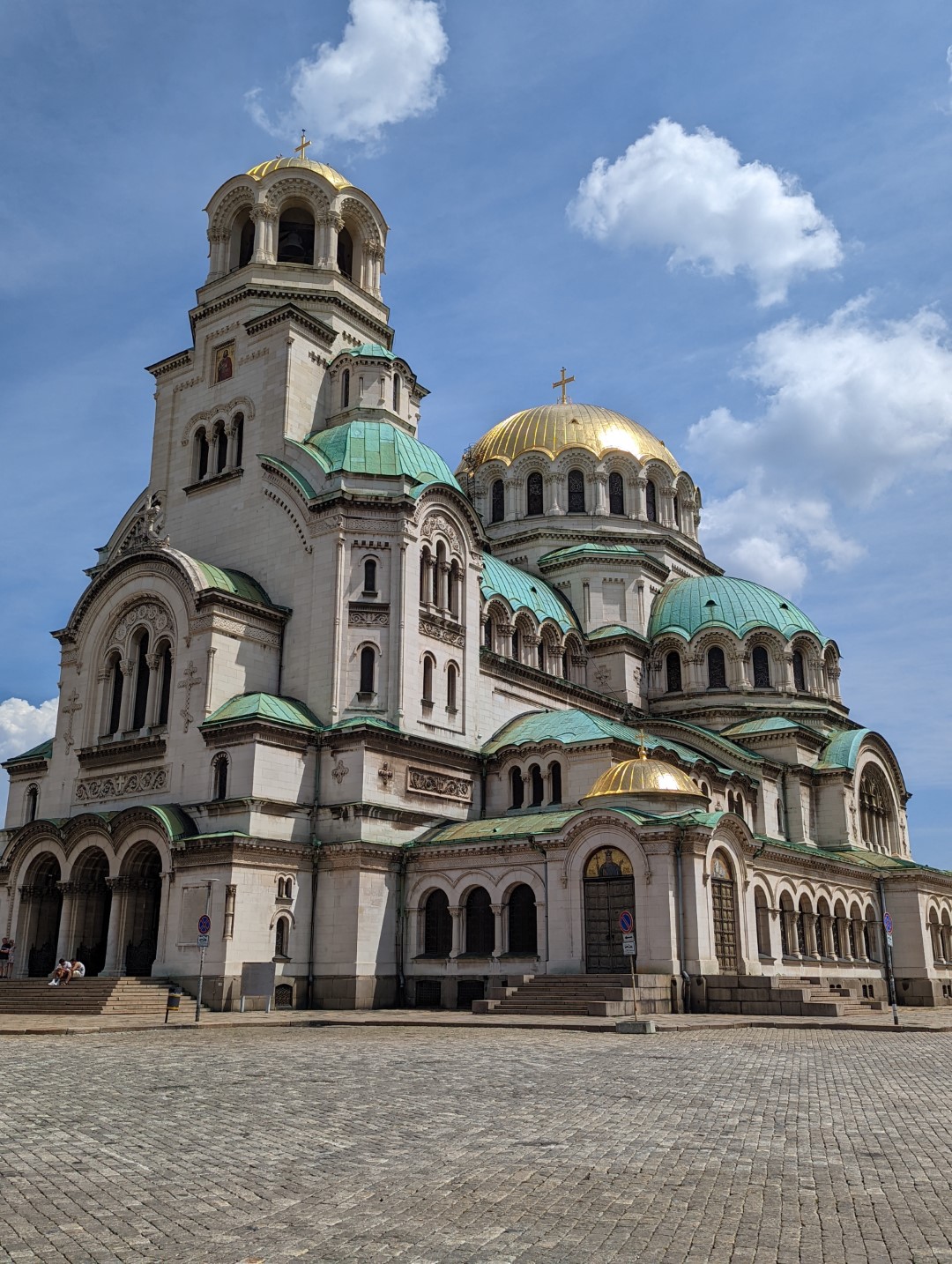While Bulgaria may be one of the poorer countries in the EU, we found Sofia to be an interesting and charming city. Looking beyond the pervasive graffiti, there is much to enjoy here.
Sofia
Sofia has been occupied for thousands of years. Unlike most old cities that are situated on rivers or oceans, Sofia sits on many springs, mostly hot springs of varying temperatures. There are public springs in the old city where locals still come to fill bottles for drinking water.
Sofia (or Serdica as it was called anciently) has been continuously occupied since the Neolithic Period (6000 BC). It was home to the Thracians (500 BC, contemporaries with the Greeks), Romans. There are Orthodox churches dating from the 4th century through to today. It was one of Constantine’s favorite cities. Like most everything in the region, the city and lands were the subject of raids, conquests, parts of different empires at different times. As a result there are many interesting ruins and buildings throughout the city.
EU investment in Bulgaria has given a modern Metro to Sofia and freeways through the country. The latter appears to be so that Germans can drive really fast through Bulgaria to get to Greece. During the construction of the Metro and other buildings in the city they uncovered and preserved even more ruins of Roman and earlier civilizations.
Religious Tolerance
The Bulgarians pride themselves on tolerance of all people. Despite landing on the Axis side of the WWII conflict, Jews of Bulgaria were not deported to concentration camps during WW II. The Bulgarian king and fellow countrymen came up with excuse after excuse to delay the deportations until the war ended. There is a Synagogue, Orthodox Church (4th century), Mosque and Catholic church all in close proximity. Locals here proudly call it “the square of tolerance”.
Even the communist era buildings, while designed to be imposing, are fairly attractive, They built the communist buildings in a part of the city that was destroyed during WWII bombings by Allies. Much like Budapest, the Soviet era monuments have been moved out of town. The large red star that featured prominently on the central building (shown below) has been replaced with the Bulgarian flag.
And here are a few other sights along the way
Seven Lakes of Rila Mountain
We took a day trip to the Rila mountains to hike and to see the Rila Monastery.
We booked a one day tour that started with a 2 hour van ride to the base of Rila mountain. Next was a nearly 30 minute chair lift ride up to the winter ski area just above the tree line, and then a couple hours of hiking and another 1500 foot elevation gain up to the lakes area. It was a beautiful clear day. It’s been a long time since we have hiked that much at altitude.
Universal White Brotherhood (uh….not what it sounds like…)
There were many people hiking that day, as we coincidently were there on August 19th, an auspicious day for the “Universal White Brotherhood” , a Bulgarian religious movement founded in the 1930’s . White refers to the color of clothing they wear, no racial reference here….
The Brotherhood folks were dressed all in white, participating in their annual Paneurhythmy in the meadow just above Kidney lake, one of the 7 lakes we visited. It was interesting, odd and pleasing all at the same time. Watch some video below to get some sense of what what happening. Click here if this looks like a movement you want to join. I get a commission.
In case you haven’t gotten your fill of Paneurhythmy, here’s some more!
Our driver for the day was full of lots of healing wisdom, like how a day in the mountains cures Covid symptoms and other ailments. Bulgaria is the least vaccinated countries in the EU. By a lot. Conspiracy theories are rampant, including 16% of the population that believe the vaccines contain microchips that can control people. I would write more about that but the microchips in my blood stream are preventing me.
The monastery was first developed by a hermit monk who lived in the 10th century. It is a beautiful setting along a stream, among steep tree-covered hills and the imposing Rila mountain. For 500 years during occupation by the Ottomans, it was the repository of Bulgarian literature and learning. The monastery holds a lot of significance to the Bulgarian people.
Five days didn’t seem like quite enough time to explore the area, but now we are on to Poland.














































Leave a Reply